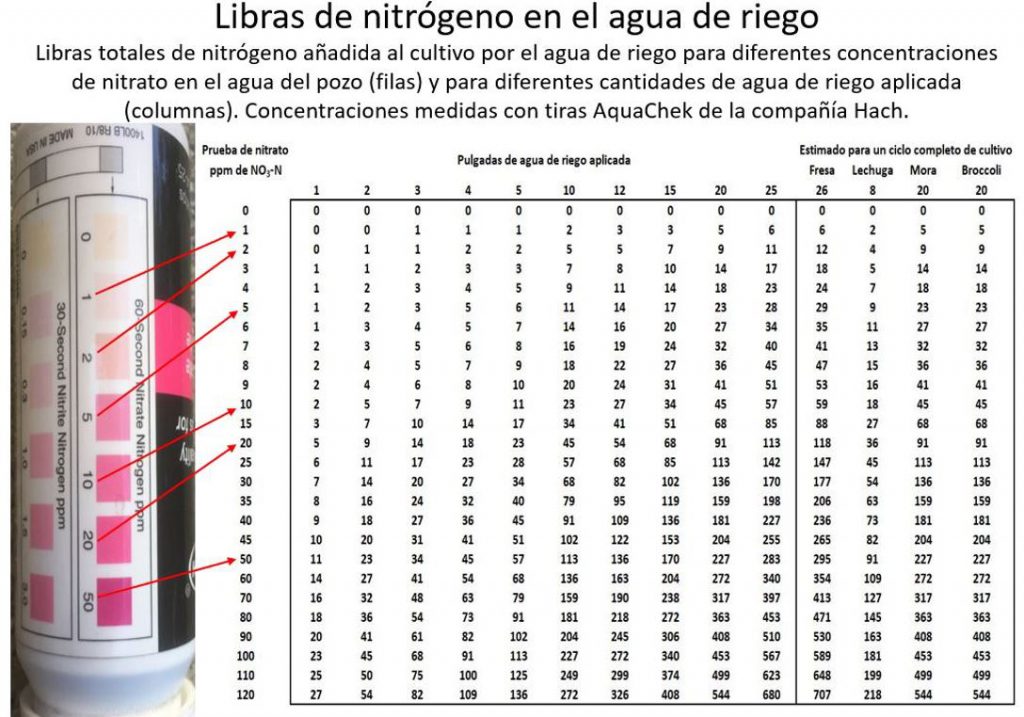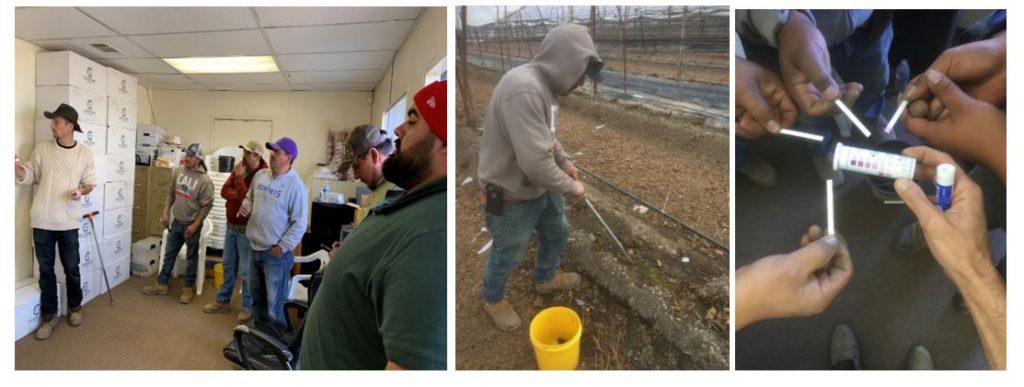Note: This is part of a Research Update series that highlights projects funded by California Department of Food and Agriculture’s (CDFA) Fertilizer Research and Education Program (FREP) grants.
Project Title: Promoting the adoption of soil nitrate quick tests by Spanish-speaking operators on strawberry ranches in Santa Cruz and Monterey counties
Project Leader: Gerry Spinelli, Resource Conservation District of Santa Cruz County
Project Status: Year 2 of 3
Overview: This FREP-funded project provides information on the efforts made by the Resource Conservation District of Santa Cruz County to improve nitrogen (N) fertilization management among Spanish-speaking farm personnel in strawberry ranches through enhancing the adoption of soil nitrate quick tests (SNQT).
Background: Given a considerable number of Central Coast communities rely exclusively on groundwater for their drinking water supply, it is crucial to enhance the efficiency of N fertilization to prevent nitrate contamination of water resources. On the other hand, high-value strawberry production requires N to be readily available for crop uptake to achieve high yield and quality. The risk of nitrate leaving the plant root zone and contaminating freshwater resources raises concerns and requires growers to be efficient with their nitrogen management.
This project is promoting the use of SNQTs as a tool to better manage N in strawberry farms on the Central Coast. SQNTs are performed in the field to measure available soil nitrate and inform N application decisions and practices. One barrier to adopting the practice of using soil nitrate quick tests is that many agricultural operators are Spanish-only speakers while many research and extension materials available are only in English. This project aims to remove the barriers for Spanish speakers to apply nitrate quick tests in strawberry and coastal vegetable crops.
Approach: Project leaders are utilizing the following methods to reach growers and encourage adoption of SNQTs.
Printed Outreach Materials
Printed Spanish and English language outreach materials, including illustrations and diagrams as well as brief explanatory text, provide information for growers on how to sample and process soil from fields and perform a nitrate quick test. The SNQT guide produced through this project indicates the amount of N per acre required by the crop based on soil test results (Figure 1). Recommendations are provided to growers in tables and charts and require no calculation by the users (Figure 2).

Figure 1. Example of soil-specific field sheet for interpreting quick test (top) and recommendations for a common fertilizer (bottom).

Figure 2. A table to look up the pounds of N per acre provided by the irrigation water.
One-on-One Field Assistance
The main approach to encourage adoption is to provide one-on-one field assistance with Spanish-speaking growers in the Pajaro Valley during two growing seasons (Figure 3). Furthermore, surveys are being completed with the participating growers to evaluate management practice adoption and project effectiveness.

Figure 3. Project leader Dr. Gerry Spinelli training a group of irrigators and ranch managers in Pajaro Valley.
Additional Outreach Methods
Several outreach events, workshops, and YouTube videos (Figure 4) provide useful information on using soil nitrate quick tests and help increase adoption rate of this practice.

Figure 4. The YouTube channel in Spanish, showing videos on the nitrate quick test and other topics in N management.
Results: The results indicate that there is strong interest in learning the SNQT technique by independent growers and by large companies. The fact that the project provides training in Spanish has proven to be a strength, as is the ability of training the personnel directly in the field. Many growers have reached out with questions regarding the use and availability of nitrate quick tests and this project aims to provide answers to all these questions along with in-field assistance.
A challenge that the project encountered with some of the growers is the lack of familiarity with basic principles of N management. This sometimes required slowing down the training pace to ensure that growers understand all of the concepts required to meet their crop N demand when they use the SNQT test. Although the project goal is limited to training growers on collecting soil samples and interpreting the SNQT, in some cases the project scope expanded into providing advice on calculating a crop N balance to support more efficient fertilization decisions.


